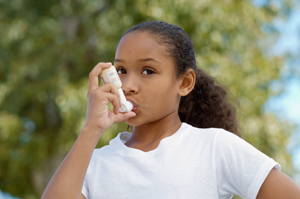Climate Adaptation – Air Quality and Health

EPA has programs and activities aimed at ensuring the nation can attain and maintain safe outdoor and indoor air quality. To accomplish this, EPA:
- Sets regulatory standards.
- Develops voluntary programs.
- Provides guidance.
- Shares technical knowledge.
However, changes to environmental conditions adds complexity to a number of these efforts, thereby threatening public health.
Outdoor Air Quality
Warming temperatures complicate efforts of many communities to attain and maintain ground-level ozone air quality standards. More frequent and extreme droughts may result in additional wildfires. Smoke from wildfires decrease air quality through particulate matter.
Each of these hazards and impacts can adversely affect public health.
Indoor Air Quality
More frequent and intense storms increase the likelihood that flooding and/or conditions favorable to molds may occur. These conditions have the ability to increase or worsen public health.
